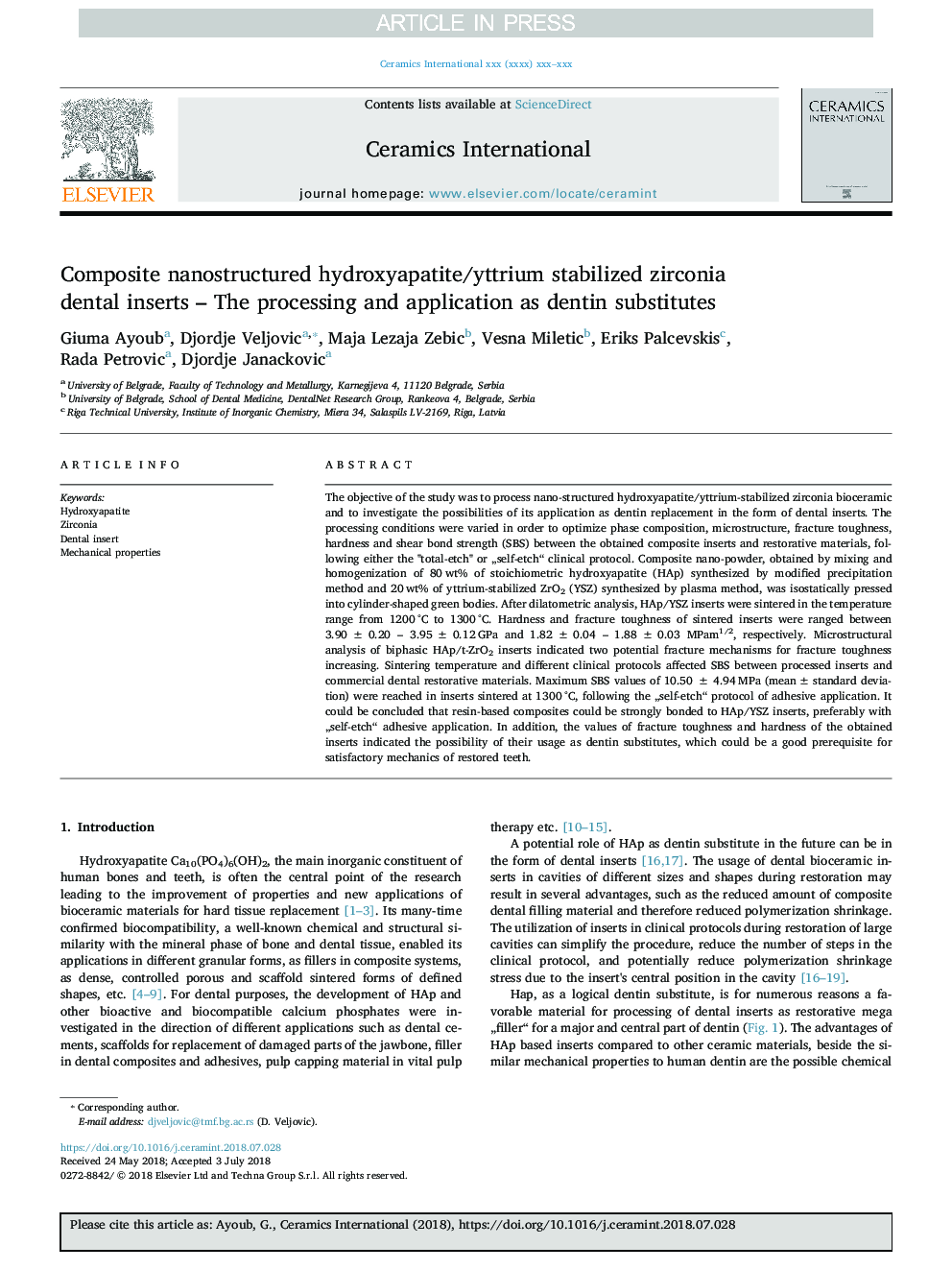| Article ID | Journal | Published Year | Pages | File Type |
|---|---|---|---|---|
| 8948503 | Ceramics International | 2018 | 9 Pages |
Abstract
The objective of the study was to process nano-structured hydroxyapatite/yttrium-stabilized zirconia bioceramic and to investigate the possibilities of its application as dentin replacement in the form of dental inserts. The processing conditions were varied in order to optimize phase composition, microstructure, fracture toughness, hardness and shear bond strength (SBS) between the obtained composite inserts and restorative materials, following either the "total-etch" or âself-etch“ clinical protocol. Composite nano-powder, obtained by mixing and homogenization of 80â¯wt% of stoichiometric hydroxyapatite (HAp) synthesized by modified precipitation method and 20â¯wt% of yttrium-stabilized ZrO2 (YSZ) synthesized by plasma method, was isostatically pressed into cylinder-shaped green bodies. After dilatometric analysis, HAp/YSZ inserts were sintered in the temperature range from 1200â¯Â°C to 1300â¯Â°C. Hardness and fracture toughness of sintered inserts were ranged between 3.90â¯Â±â¯0.20 - 3.95â¯Â±â¯0.12â¯GPa and 1.82â¯Â±â¯0.04 - 1.88â¯Â±â¯0.03 MPam1/2, respectively. Microstructural analysis of biphasic HAp/t-ZrO2 inserts indicated two potential fracture mechanisms for fracture toughness increasing. Sintering temperature and different clinical protocols affected SBS between processed inserts and commercial dental restorative materials. Maximum SBS values of 10.50â¯Â±â¯4.94â¯MPa (mean±standard deviation) were reached in inserts sintered at 1300â¯Â°C, following the âself-etch“ protocol of adhesive application. It could be concluded that resin-based composites could be strongly bonded to HAp/YSZ inserts, preferably with âself-etch“ adhesive application. In addition, the values of fracture toughness and hardness of the obtained inserts indicated the possibility of their usage as dentin substitutes, which could be a good prerequisite for satisfactory mechanics of restored teeth.
Related Topics
Physical Sciences and Engineering
Materials Science
Ceramics and Composites
Authors
Giuma Ayoub, Djordje Veljovic, Maja Lezaja Zebic, Vesna Miletic, Eriks Palcevskis, Rada Petrovic, Djordje Janackovic,
